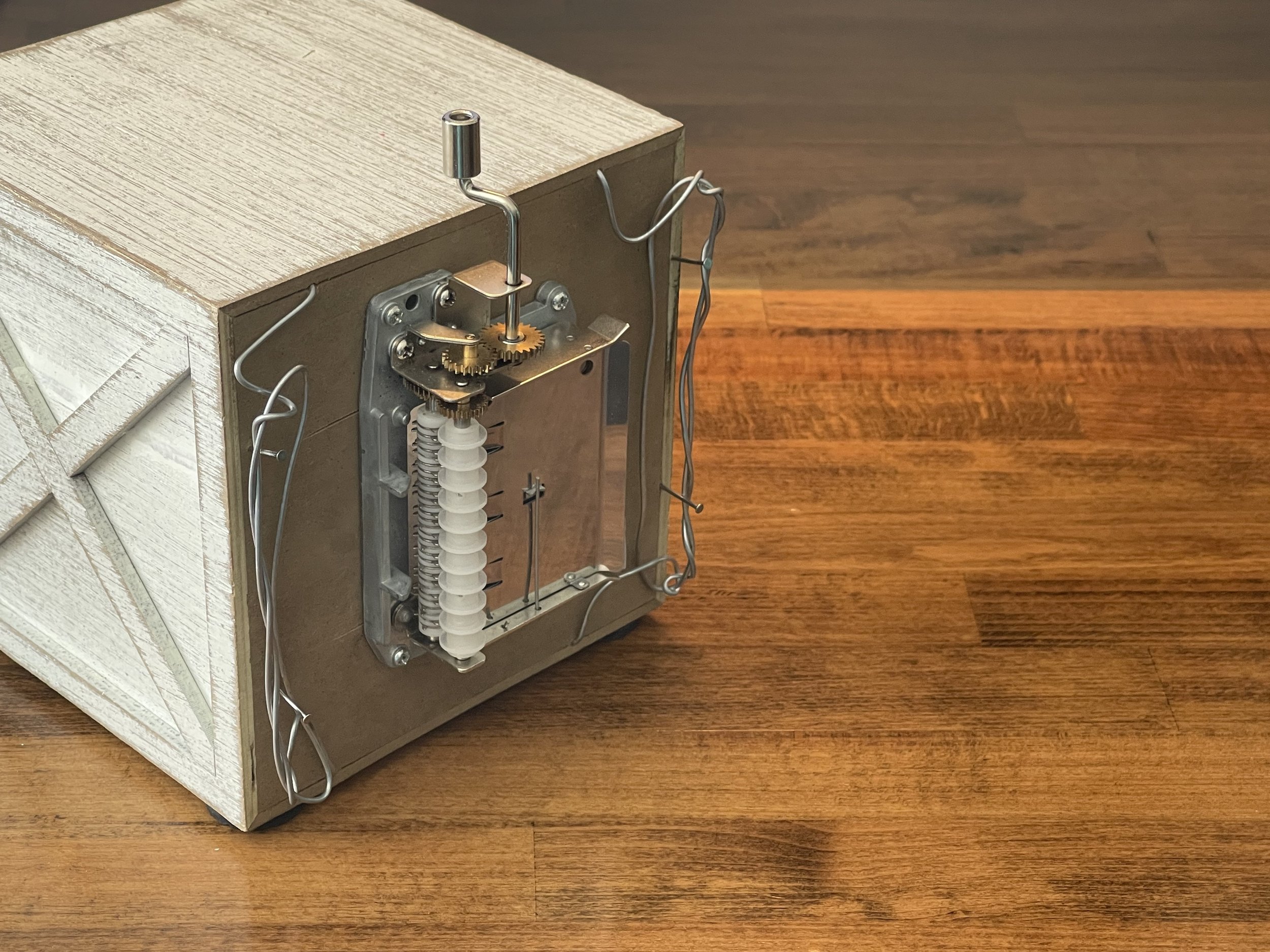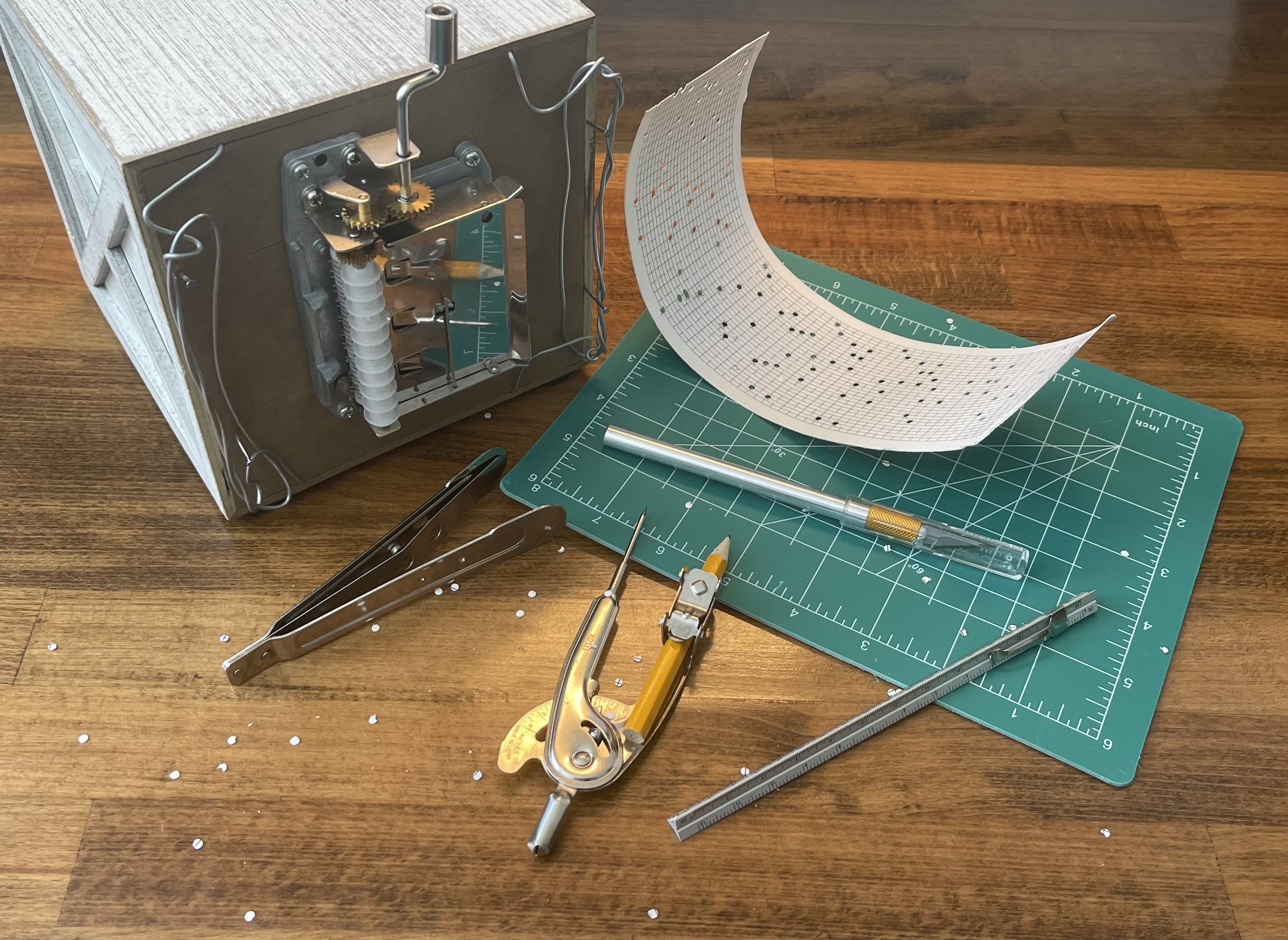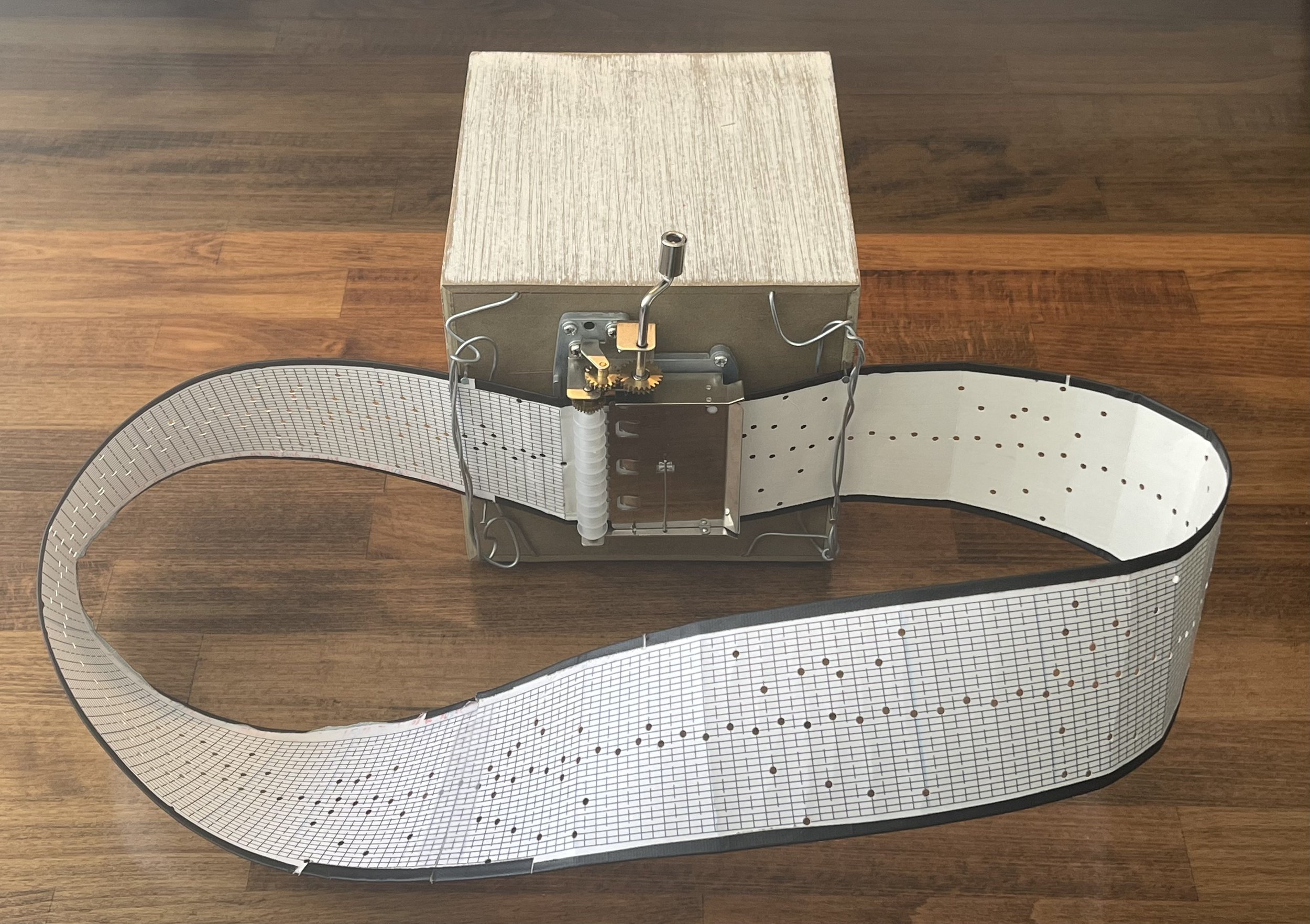
Research
History and Theory
Instrument Building
Orchestration
Electronics
& more!
Visualizing Music:
Connecting Electronic and Acoustic Performance with the Spectrogram and Oscilloscope
The lost Opera of Shirley Graham du Bois
Analysis of Shirley Graham Du Bois’ Opera: Tom-Tom
Harmonic Analysis of
Igor Stravinsky’s Requiem Canticles
Movements II and III
Ryan’s Music Box
Inventing a new performance practice.
Various tools are used to manipulate a paper, 30 note, piano roll. The roll is fed through the machine and tempo is controlled directly with the crank.
Using a clip-microphone mounted to the inside of the machine, each performance can feature synthesized sounds sampled from the instrument itself using Ableton Life and Max for Live.
MObius
Mobius, is the first complete composition realized for the instrument. The genesis of the composition came from the interesting nature of how the machine handles inversion. The 30 pitches are not entirely chromatic, so when the piano roll is physically flipped the machine performs a uniquely constructed harmonic inversion which can be carefully controlled. Mobius, uses a literal mobius strip for the piano roll to demonstrate these compositional connections through uninterrupted performance.
Raindrop
Dedicated to Ryan’s recently passed kitten, Raindrop, makes more elaborate use of synthesized electronics to create a sensitive atmosphere reminiscent of a baby’s mobile or a peaceful cat-nap. The atmospheric mechanical foreground is produced using the Max for Live instrument Granulator II by Robert Henke sampled from one pitch of the music box. That same one-note sample is used in Ableton’s native Sampler instrument to produced pads and pitches outside of the acoustic range of the Music Box.










